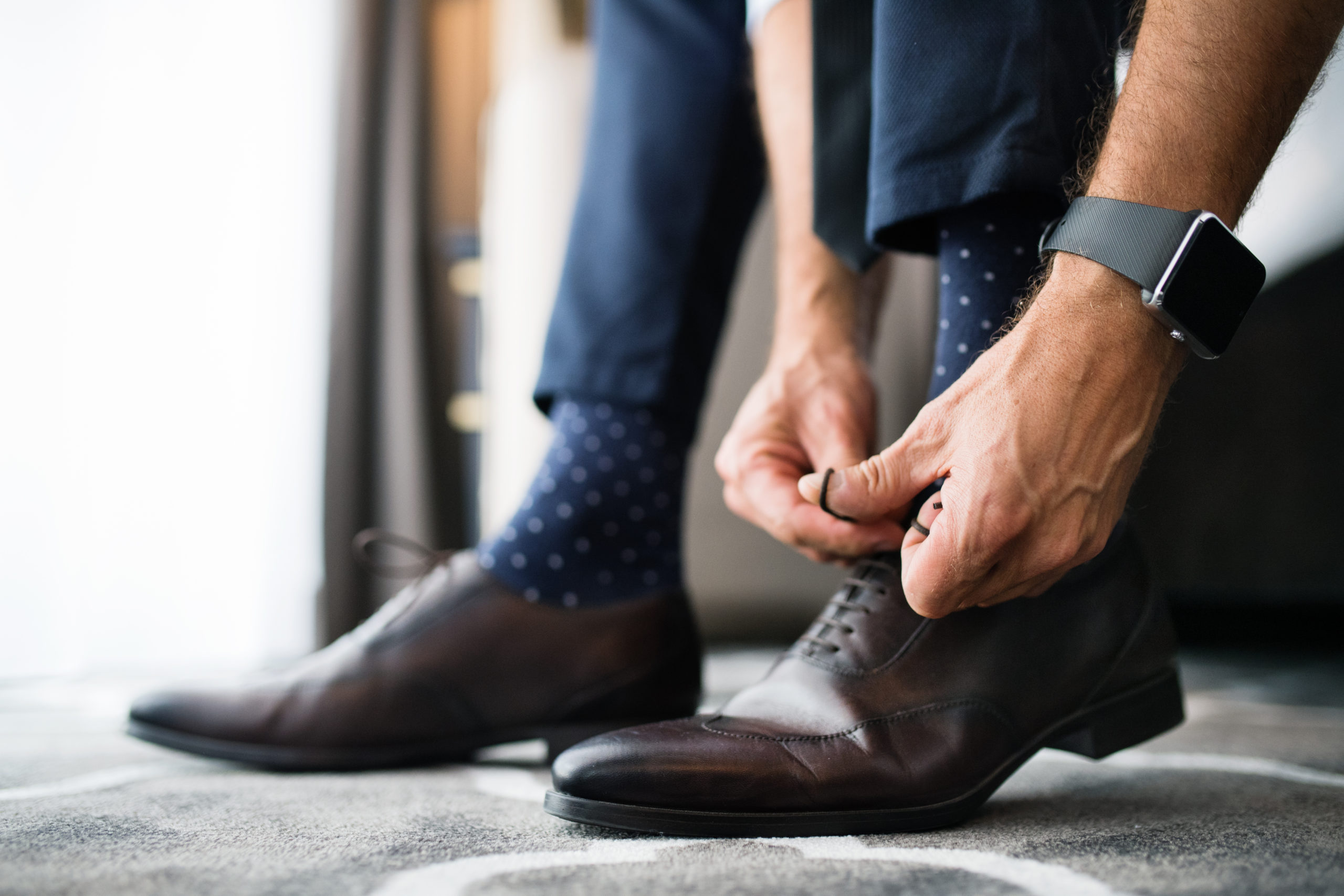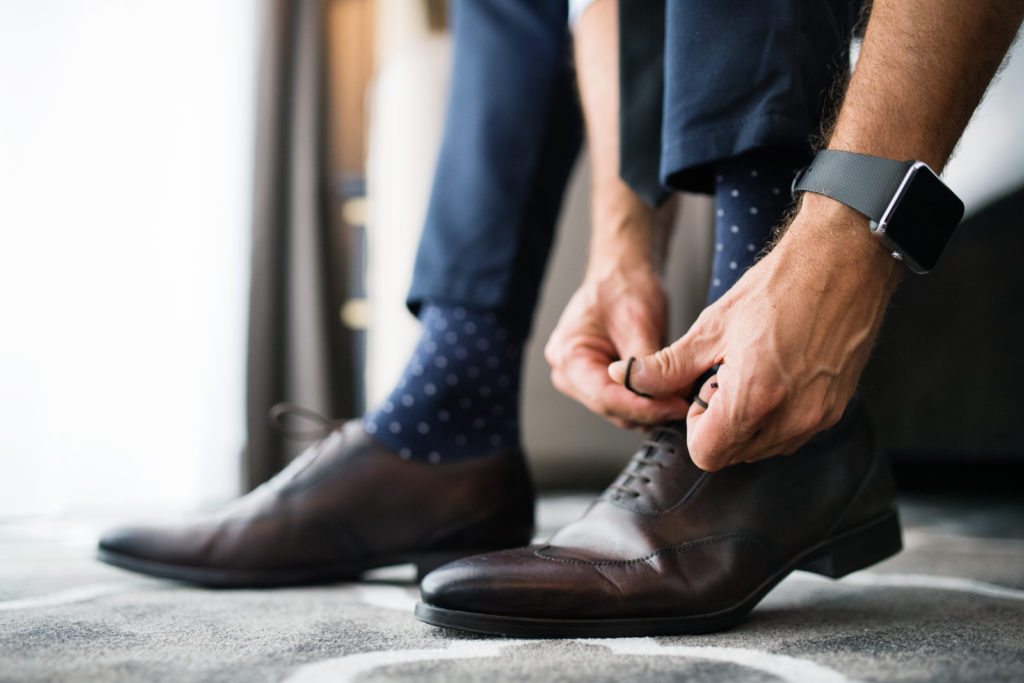

When your work boots are performing at their best, they can help optimise your comfort, promote your foot health, improve your productivity, and best support not just your feet but your whole body through some long hours.
Improper footwear, on the other hand, is at the top of Safe Work Australia’s list of causes of preventable injuries at work, contributing to thousands of slips, trips and falls each year, alongside many more causes of foot and leg aches and pains, often from overuse, that our podiatrists see and treat.
So how do you know when it’s time to replace your work shoes? Here are four tell-tale signs.
1. A Semi-Faded Or Worn-Down Tread
Just like the tyres on trucks and cars, it’s important to keep track of the tread on your shoes. For safety purposes, it’s essential that work boots maintain their tread so that you can work in a range of environments with sturdy and secure footing. When the tread of your boots wears down, your boots can become slip hazards on their own, putting yourself and those around you at a greater risk of accident and injury. Generally, the soles will last longer than your boots’ cushioning and shock absorbency, so if the tread on your boots is worn down, it’s an indication that other parts of your boots are likely to be too.
It’s also important to check for signs that your tread is wearing unevenly, as this may indicate a possible gait issue, which your podiatrist can support you with to assess and correct the problem. Excessive wear on the inside of your boot can be a sign of excess pressure likely as a result of overpronation, where your foot rolls down flattens significantly. Excessive wear on the outside of your boot may be a sign of a supinated foot type, leaving greater pressure on the outside of the boot with each step.
Walking on shoes with uneven tread can throw off the precise angling for custom foot orthotics and exacerbate any foot pain or problems over time.
What to look for:
- Turn your shoes over and look at the tread or sole of your boots – is it difficult to even see any pattern that was there?
- Do you notice more wear on one part of the shoe than another?
- Many boots are constructed with layers of different-coloured materials, so if you see another colour through the sole or tread, it is likely time for a new pair.
2. Too Much Flexibility
While some amount of flexibility is important for safety, comfort and support in a work boot, there is a point where too much flexibility poses safety risks. If you’re wearing boots that are overly bendy, flimsy, have a heel counter that easily bends in or if they look and feel ‘flat’, this can mean that their structural rigidity has been compromised – usually through wear and tear over time.
Whenever the materials, soles or insoles wear down and get stretched, they no longer function as they are meant to, and over time, this can take a significant toll on your foot health. For example, when the sides of your shoes become weak, they can lose the ability to give you effective ankle support.
What to look for:
- Try the flexibility test – try to touch your boot’s tip to its heel. If it bends completely without much resistance, this is a sign they need to be replaced.
- Set your shoes on a table – do they sit tall and straight? If they’re floppy or leaning to one side, they’re no longer stabilising your foot.
- Is the heel counter firm? The heel counter is the part at the back of the shoe that wraps around the back of your foot, providing stability for your ankle. This should be rigid and not bend easily when pressed down. You can also check it by trying to slip out of your boots – if you can slip your feet out and back in without unlacing them, it may be a sign that their heel counter is worn out. This counter is often the first part of a shoe to wear down because many people slip their feet out of their boots without untying them first.
3. Visible Damage
If you have visible damage to any part of a work boot that is designed for safety, you should always check to make sure it’s not more than just cosmetic – as a scratch in the leather upper might not be cause for concern, but a scratch on the sole could expose a metatarsal guard or steel shank.
Work boots are generally held together by a combination of different glues, adhesives and stitching, which can break down over time. All parts of your boots will warp with heat, sun exposure and moisture, so if you work outdoors or somewhere damp, they’ll break down faster. It’s important to replace work boots with any signs of damage, which can expose your feet to dangerous elements, become a tripping hazard, or even make it easy to slip out of your boots unintentionally.
What to look for:
- Do your boots have any holes in the uppers or soles?
- Is your boot coming apart where the sole meets the upper portion of your shoes?
- Check the insides of your boots – do they have stitching or glues that have come undone
- Can you see your safety toe cap through the leather at the front of your work boot? Even if there is only the smallest of cracks, these can grow over time and allow dirt, mud and other substances to enter your boots and wear down their inner lining
- Is the leather cracking and dried out where your boot bends
- Is the toecap intact? If the protective toe has been damaged at any point, it needs to be replaced. While a steel or aluminium toe cap might have an obvious dent after an impact, a composite or carbon-fibre cap may only have microcracks which can grow over time.
- Are the seams falling apart? If you can see the seams falling apart, it is time for new boots. These boots can no longer provide the protection that safety footwear requires.
- Are there cracks in the soles? To keep your feet protected, we recommend replacing your work boots if you notice cracks or cuts in the soles.
4. Foot Or Leg Pain And Aches
Having a full day’s work on your feet should not be a cause of foot pain or aches, even when you’re working on surfaces like concrete which are known for being tough on our joints. Similarly, coming home with tired and achy legs is not the ‘norm’, instead it may be a sign that your feet may no longer be well supported in their shoes.
When work boots no longer hold the foot and ankle well in place, it may allow the foot to move excessively within the shoe and lead to ‘overuse’ – meaning that the muscles and ligaments in your feet are now working harder than they used to to keep the foot moving step after step, which can be exhausting, painful, and can lead to conditions like plantar fasciitis heel pain or pain at the ball of your foot. In this case, it’s a good idea to not only check whether your work boots need replacing, but also to see a podiatrist who can design an effective rehabilitation program for you. Our podiatrists can also assess the biomechanics of your feet, and see whether you could benefit from having additional support in your boots, like with foot orthotics, to optimise your comfort and safety.
Work Boot Tips
To help you make the most of your work boots, we recommend:
- Having a second pair: alternating between two pairs of work boots on concurrent days helps increase the lifespan of both sets by giving the shoes the time to rest and dry between use. Having a second pair of boots also helps promote your foot health by not having to wear a wet pair of boots from the previous day, with the damp, moist and warm conditions within work boots being an ideal breeding ground for fungal infections like Athlete’s foot. Plus, if you notice that one of the pairs is now causing you discomfort, you can move straight to wearing only the other pair without subjecting your feet to pain until you have time to head to the shops.
- Unlace your boots instead of slipping them off: slipping your boots off instead of unlacing them can damage and bend the heel collar – the part of the shoes that wraps around the back of the heel. The heel collar is important for helping maintain the structural integrity of the shoe, so wearing it down will notably reduce the lifespan of your boots.
- Keep work boots for work: it can be tempting to pop on your work boots for a quick errand, especially if you have a new supportive pair, but this all accumulates and exhausts the boots and materials, reducing their overall lifespan. Keep dedicated work boots for work only.
- Clear your work boots regularly: when debris, dirt and mud build up on the boots, it can damage the material over time, causing the stitching to break down and impacting their strength and integrity.
Safety Boot Selection Guide For Tradies
If you’re a tradie looking for a new pair of work boots and aren’t sure what to look for, and which pair will be best for your feet, check out our safety boot selection guide.
Bring Your Boots In To Your Appointment With Us
If you’re not sure if your work boots are playing a role in the development of your foot or leg pain, or you’d like to get a professional opinion on whether it’s time for a new pair, bring them in to your next appointment with us. We work extensively to help with work-related foot pain, and ensure your shoes aren’t just fit for purpose at your work – but also fit for purpose for your health, well-being, and when it comes to injury and pain prevention.
Book your appointment with us online here or call us on 1800 FOOT DR.
References
[1] https://www.safeworkaustralia.gov.au/safety-topic/hazards/slips-trips-and-falls


